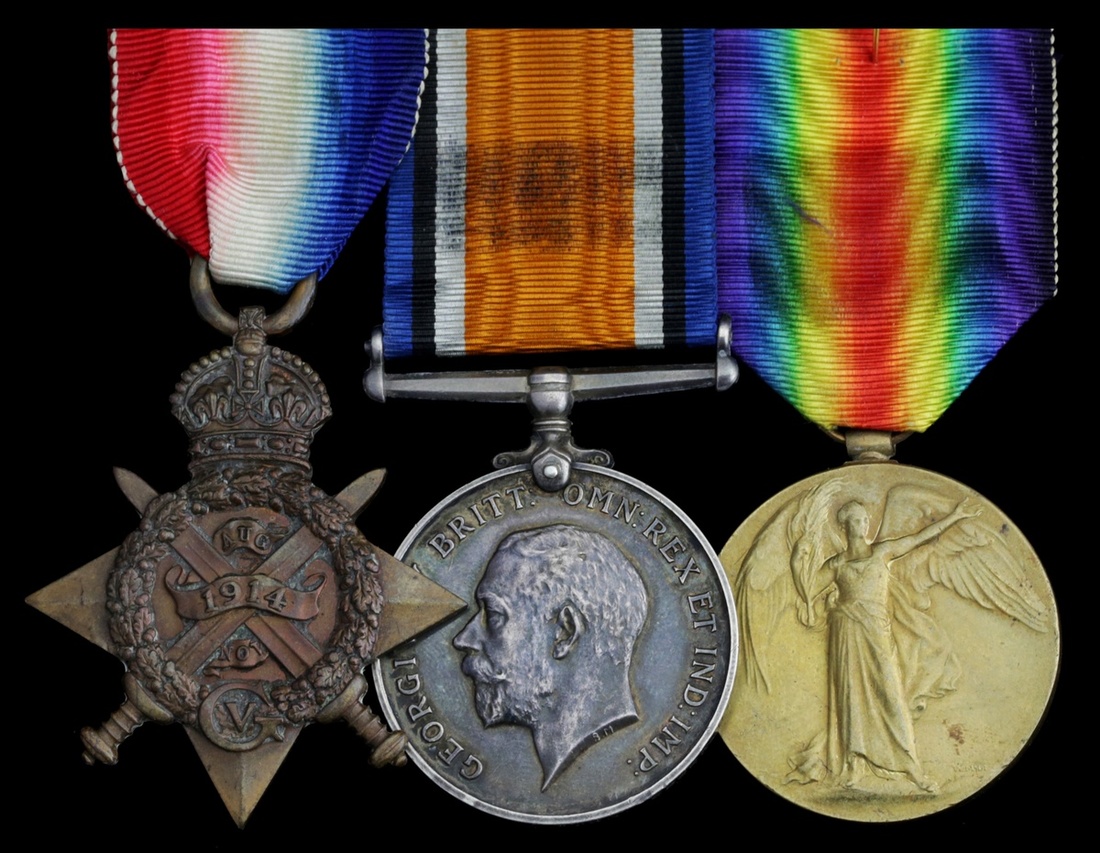
Auction: 18003 - Orders, Decorations and Medals
Lot: 340
Three: Private H. Brown, 2nd Battalion, Essex Regiment, who died of wounds during the Second Battle of Ypres, the first successful German use of chemical weapons on a large scale on the Western Front
1914 Star (10086 Pte. H. Brown. 2/Essex R.); British War and Victory Medals (10086 Pte. H. Brown. Essex. R.), the third with neatly erased naming, good very fine (3)
Harry Brown, who was born at Romford, landed at Le Havre on 22 August 1914, in the 2nd Battalion, Essex Regiment, arriving just in time to provide infantry reinforcements at the Battle of Le Cateau. They were then heavily engaged at the Battle of the Marne, the Battle of the Aisne and at the Battle of Messines from 12 October to 2 November 1914, which was fought as a consequence of the race to the Channel and one of the engagements which decided the line of the Western Front.
In April and May of 1915 the Essex Regiment fought in the Second Battle of Ypres and were charged with defending the lines of trenches which formed a jutting salient, overlooked to its south-eastern edge by the 150 foot high Hill 60 which acted as a valuable observation post. During the morning of 22 April the Germans poured a heavy bombardment around Ypres, but the line fell silent as the afternoon grew. However, towards evening at around 5 p.m., the bombardment began afresh - except that sentries posted among the French and Algerian troops noticed a curious yellow-green cloud drifting slowly towards their line; the Germans had released chlorine gas from 5,700 cylinders in front of their trenches.
Panic-stricken French and Algerian troops fled in disorder creating a four mile gap in the Allied lines, which was quickly filled by Canadian and British troops, but at terrible cost; gas masks were non-existent at this time. The Germans similarly struggled with their own weapon, for when the gas valves froze due to the rapidly expanding gas, many Germans tried to open them and were themselves subject to burning of the mucous membranes of the lungs and eyes. In desperation, the men resorted to urinating on rags and placing them over their faces, with limited results; the Canadians suffered 6000 casualties alone.
At 5 p.m. on 2 May 1915, the Germans launched another significant chlorine gas attack which fell directly upon the men of the 2nd Essex Regiment in the trenches previously occupied by the French and Algerians; the green smoke once again was seen drifting towards the Allied troops and the order was given to don respirators and hold the line. When the gas hit there was considerable panic with men getting out of the trenches and reeling to the rear. Captain Pechell, with 12 men from 'B' Company, including Private Brown, stayed in their position until relieved by the reserves. Such was the intensity of the gas that C.S.M. Tipler was killed during this action.
Harry died of wounds on 13 May 1915, eleven days after this chlorine gas attack and is commemorated on the Menin Gate Memorial. It is likely that he was one of the first British casualties of this new type of warfare.
For further details, see:
https://www.essexregiment.co.uk/2ndpg1915.html
Subject to 20% VAT on Buyer’s Premium. For more information please view Terms and Conditions for Buyers.
Sold for
£100




